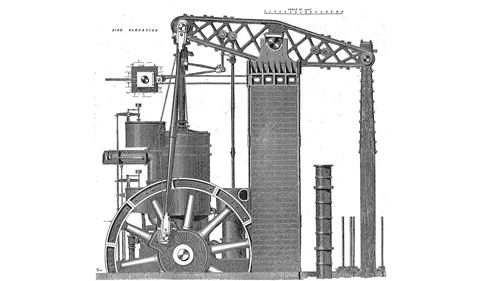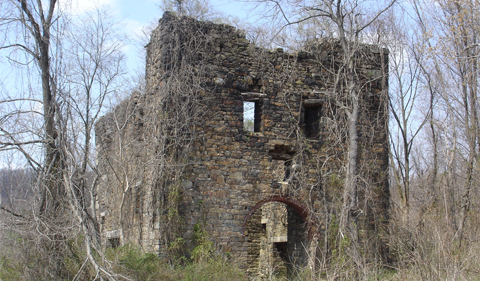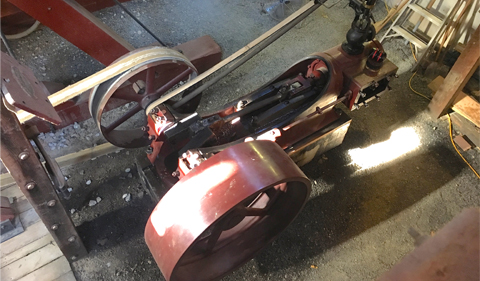
Diagram of the largest stationary steam engine ever built in America from an 1876 article in Scientific American
Dr. Damian Nance, Distinguished Professor of Geological Sciences, gave an hour-long presentation in Salisbury, NC, in early November that made the Salisbury Post in a story headlined ‘Cornish Cousins’ follow their rich mining heritage to Rowan, Cabarrus counties.
Nance, a native of Cornwall in the United Kingdom, had been invited to Salisbury to join the 18th biennial gathering of the Cornish American Heritage Society to give a talk about an aspect of his Baker Award project on the use of steam in 19th century mining technology. The Cornish were the world’s experts in steam technology and hard-rock mining during the 19th century, and the town of Gold Hill, just 15 miles from Salisbury, has a history tied closely to Cornish miners and engineers. In 1842, rich veins of gold discovered at Gold Hill spawned the Carolina Gold Rush and the little town rose to become the richest mining property east of the Mississippi.

Dr. Damian Nance
With colleague Mark Connor from Bethlehem, Pennsylvania, Nance’s presentation had two objectives – to introduce the gathering to Cornish steam technology and its role in America’s mining history, and to solicit their help in an ongoing project to preserve the only surviving structure in the United States built for a Cornish steam pumping engine.

The surviving engine house of “The President” in Friedensville, PA
The building in question, which stands on the former Ueberroth zinc mine southeast of Allentown, PA, once housed the largest stationary steam engine ever built in America. Designed by the Cornish immigrant John West and built by the Philadelphia foundry of Merrick and Sons, the engine weighed in at a staggering 650 tons and was christened “The President” in honor of Ulysses S. Grant.
Its single cylinder was over 9 feet in diameter and was supplied with steam by no less than 16 boilers. Rated at 3000 horsepower, the engine turned two 30-foot flywheels, each weighing 75 tons, and was capable of pumping up to 17,000 gallons of water a minute from a depth of 300 feet. It was worked continuously from January 1872 until October 1876, after which it was run intermittently until mining operations ceased in 1891.

Small horizontal steam engine used to drive the restored 19th century ten-stamp mill at the Reed Mine, North Carolina, where American gold was first discovered in 1799
In the United Kingdom, Nance’s study of buildings like that of “The President” led to the publication of a book entitled “A Complete Guide to the Engine Houses of West Cornwall” in 2014. Two further volumes, one on mid-Cornwall and the other on East Cornwall and Devon, have now been completed as a result of the Baker project.


















Comments